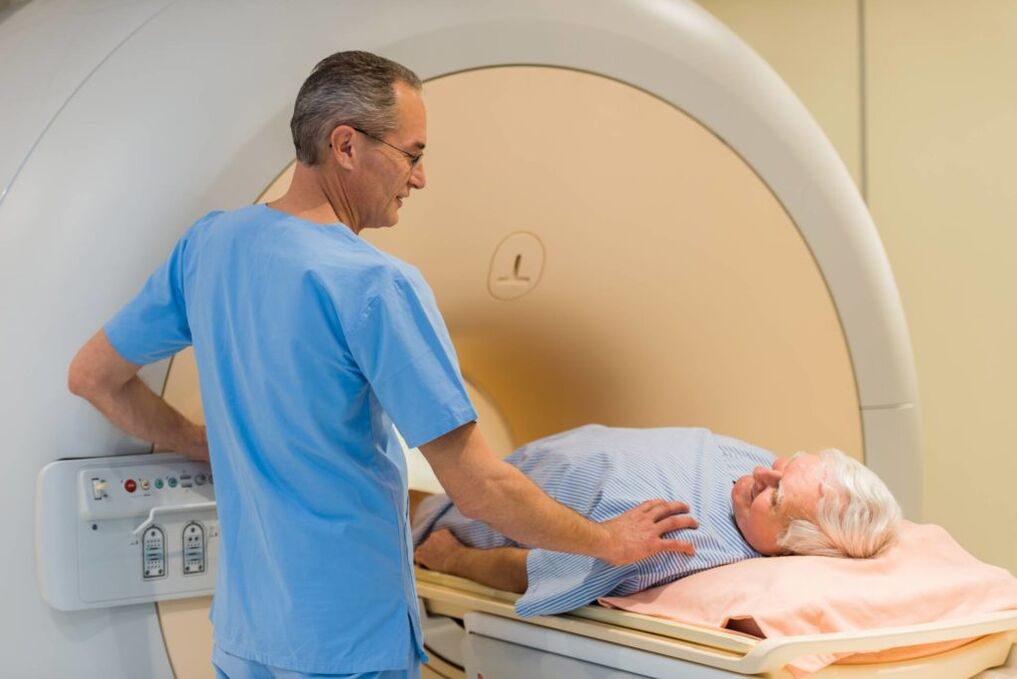Calculus prostatitis is a complication of a chronic inflammatory process in the prostate gland. With this disease, stones form in the excretory ducts of the prostate and acids. As a result of the development of the pathological process, the patient's desire to urinate becomes more frequent, pain appears in the perineum and lower abdomen, and the erection is impaired. You should not skip the course of this disease as it can eventually lead to a number of health problems.
What is calculous prostatitis

This disease is a form of chronic prostatitis. The disease is characterized by the formation of prostatitis or stones, being one of the most common consequences of a prolonged inflammatory process observed in the prostate gland.
Prostate stones are most often detected during a routine examination in about 9% of men of different ages.
There are three age peaks in the incidence of this form of prostatitis:
- 30-39 years old. As a rule, the disease is not detected in patients under 30 years of age. However, the disease is gradually becoming younger. In persons of this age, the development of calculous prostatitis is associated with a long course of chronic prostatitis caused by gonorrhea, chlamydia, ureaplasmosis or mycoplasmosis.
- 40-59 years old. In men of this age group, the disease most often causes prostate adenoma.
- Over 60 years old. In this case, calculous prostatitis most often develops against the background of the disappearance of sexual function.
Causes and risk factors
The formation of stones in the prostate gland can be due to two types of reasons:
- True or primary, which are characterized by the direct development of the disease in the glandular or acne ducts.
- Secondary or false, in which there is a migration of stones from the upper urinary tract. Most often, the site of their formation is the bladder, kidneys or urethra. The reason for the development of calculous prostatitis may be urolithiasis.
Depending on the nature of the onset of the disease, the reasons for its development are divided into two groups:
- Exogenous. In this case, it is about those factors that do not relate to the work of the body, but act on it from the outside. This includes drug addiction, smoking or alcohol abuse.
- Endogenous. Concretions occur against the background of any disturbance in the functioning of the body. It is about organ damage or complications after surgery. Bacterial damage to the prostate is also associated with these factors.

Alcohol abuse can cause the development of calculous prostatitis in men.
Calculus prostatitis usually develops against the background of stagnant, inflammatory changes in the prostate. Such processes arise due to insufficient emptying of the prostate glands, so the following factors are the main causes of the disease:
- lack of regular sex life;
- the predominance of a sedentary lifestyle;
- replacing sex with masturbation;
- bad habits, such as alcoholism or smoking;
- inflammatory processes of the prostate gland caused by the penetration of microbes into the organ.
Experts distinguish between two main pathological mechanisms that lead to the formation of stones in the organ and its ducts:
- Violation of secretory function, as a result of which a considerable stagnation of prostate secretion is formed.
- Discharge of urine into the cavity of the prostate gland. This can occur against the background of improper functioning of the genitourinary system, the formation of fistulas and the influence of a number of other negative factors.
Symptoms
The signs of calculous prostatitis are in many ways similar to the development of chronic inflammation of the prostate gland, but they are more pronounced. Most patients diagnosed with this form of prostate complain of difficulty and pain when urinating.
The difference from chronic prostatitis in this case is the pain present in the patient throughout the hour, and not just at night. The reason for such a clinical picture is most often the disturbed process of urine flow and prostate secretions. This is due to complete or partial blockage of the canal with a stone.
A number of other symptoms of the disease should also be noted:
- Presence of pain in the pelvis and perineum. Moreover, they can manifest not only during urination. Patients have uncomfortable sensations in the tail and lower abdomen, which do not depend on the specific time of day.
- Pathological impurities appear in the semen. Often, bloody leaks are found in it and only in extreme cases can there be pus.
- Pain of urination against the background of frequent false desires. In most patients, very little urine is excreted. However, it may be completely absent.
- Erectile dysfunction. Due to the fact that the prostate gland duct is blocked, the normal flow of sperm from the organ is interrupted. All this leads to the impossibility of ending the relationship.
In the most severe cases of disease development, the patient may completely lack an erection and significantly reduce libido.
Diagnosing

Magnetic resonance imaging gives good results for accurate identification of the disease.
Before treating prostate calculus, the patient should be carefully examined. The urologist is engaged in diagnosing this disease. He is obliged to make a preliminary diagnosis based on the patient's complaints, as well as subsequent physical and instrumental examination. It includes the following procedures:
- Digital rectal examination of the prostate gland. It is performed by palpation. In the presence of calculous prostatitis, the patient has a type of crepe and a lumpy stone surface.
- Transrectal ultrasound of the prostate. Through this procedure, stones are identified that have the appearance of hyperechoic formations with clearly visible acoustic pathways. The number of such formations, their size, localization and structure are studied.
- Urography survey. The procedure allows you to identify the presence of prostalitis.
- MRI and CT of the prostate. These techniques are very effective and are used to confirm the results of previous studies.
As additional procedures are used: urethrography, pyelography and cystography.
In addition to instrumental techniques, the diagnosis of calculous prostatitis includes laboratory tests, which include the following procedures:
- Study of prostate secretion.
- Analysis for bacteriological culture of urine and urethral material.
- The PCR study, during which a scraping is taken, has been studied for the presence of genital infections.
- Blood tests. Most often, a biochemical analysis is done.
- Urine analysis.
- Sperm analysis for biochemistry.
- Bacteriological culture of ejaculate.
If we are talking about performing differential diagnosis, then its task is to differentiate calculous prostatitis from tuberculosis, prostate adenoma, prostate oncology, as well as different types of prostatitis.
Treatment
How to cure stone prostatitis? Therapy for calculous prostatitis is prescribed by a doctor based on a thorough diagnosis. Depending on the degree of disease development, several treatment options are possible. Let's examine each of them in more detail.
Drug therapy
The course of treatment is prescribed by the doctor strictly individually.
Treatment of chronic calculous prostatitis with pills can take from one to three months. This type of therapy is mainly aimed at achieving lasting remission and preventing complications of the disease.
Regardless of the cause of the disease, the patient is prescribed antibacterial drugs. Antibiotics are prescribed based on the results of urethral secretion analysis and urine culture.
The most common remedies used in the treatment of calculous prostatitis are:
- Fluoroquinolones. This is the most effective group of antibiotics used to treat calculous prostatitis. However, these funds can be used only after the presence of tuberculosis has been completely ruled out.
- Tetracyclines. They are used less frequently, as they often provoke the appearance of side effects.
- Penicillin. Classic antibiotics that have a wide range of effects on pathogenic microflora.
- Cephalosporins.
Physiotherapy
To increase the effect of drug therapy and improve prostate function, the following physiotherapy techniques are used:
- Magnetotherapy. Used to eliminate edema and normalize the circulatory process.
- Laser therapy. Eliminates pain syndrome and helps reduce the inflammatory process.
- Prostate massage. Allows you to restore duct patency, improving blood circulation to the prostate gland.
In some cases, treating calculous prostatitis requires a radical approach. In this case various surgical techniques are used, among which the most popular is prostatectomy.
Possible complications

Sport is the best prevention of calculous prostatitis.
If the patient is not given timely treatment, the patient may develop chronic prostatic calculi. This can be fraught with the following dangerous complications:
- development of an abscess;
- prostate fibrosis;
- problems with potency;
- urinary incontinence;
- various forms of vesiculitis.
Therefore, it is very important to identify calculous prostatitis in time and start its treatment. As a prophylaxis of this disease, you should give up alcohol and tobacco, play sports, treat infections in time and prevent hypothermia of the body.
























